Halifax man urges street sign improvements
Project identifies Halifax intersections with hard-to-read street names
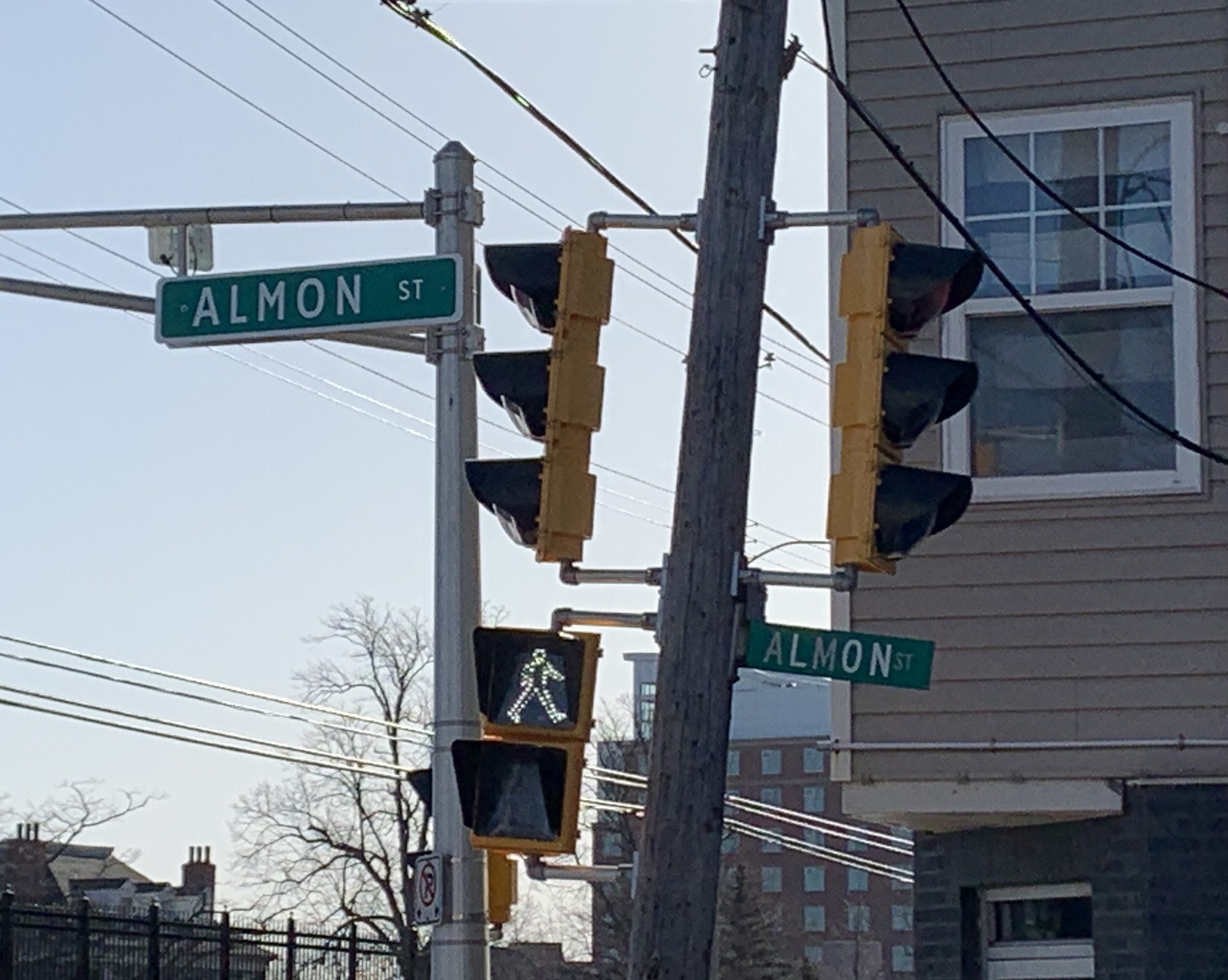
caption
The two signs for Almon Street at its junction with Gottingen Street are a perfect illustration of the difference in effectiveness of both styles of signs. The oversized sign is larger and is mounted over the roadway, while the smaller sign is farther off to the side and harder to read while driving.Last month, Halifax resident Brennan Wilkie was so frustrated by missing and hard-to-read street signs that he took to Reddit to complain.
It turns out he’s not the only one.
So far, Wilkie has had several people comment on his post and offer locations of missing signs. He said that Halifax is falling behind other cities.
“When I think about other cities, I just assume that they do it better than us. I look at what we’re doing, and it seems like such an easy fix.”
“I got fed up with it. I looked at it from the standpoint of someone who’s coming to the city and doesn’t know the streets, and how difficult it would be for them,” Wilkie said in an interview.
He plans to traverse the entire Halifax peninsula this summer, compile a list of all the missing signs, and turn it over to the municipality.
Many street name signs at major intersections in downtown Halifax are hard for drivers to read.
Some intersections with traffic lights have oversized, newer signs that are mounted on the traffic light poles suspended over the roadway. These signs are easy for drivers to read and are tough to miss.
But at many intersections, an older style of sign is still used. These smaller signs are commonly found in neighbourhoods and on less busy roads. When these signs are used at major intersections, they are often placed high up on telephone poles or are set back from the intersection, making it challenging for drivers to read.
Among the many streets missing the most oversized signs at major intersections are North Street, Barrington Street, Oxford Street, Robie Street, and Connaught Avenue. All of these streets are major traffic corridors in downtown Halifax.
These areas with many unreadable signs are clustered in the central part of the peninsula and downtown, while the North End and South End tend to have more intersections with clear signage.
GRAPHIC: The following two maps show the major North-South and East-West corridor streets in Halifax. Each dot represents an intersection with a traffic light along these routes. Green dots represent intersections with oversized street signs, red dots are streets with small, hard to read signs. Data based on observations in March 2021.
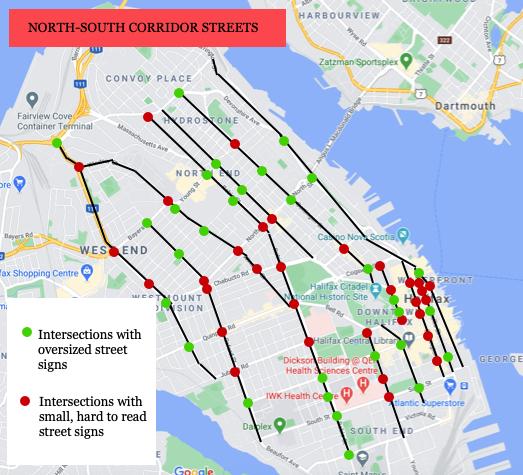
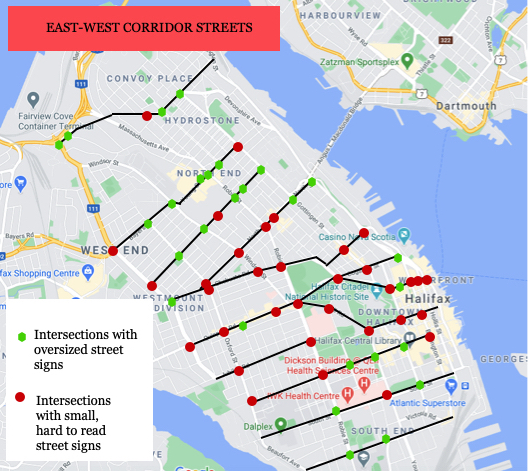
Poor signage not only affects locals, but tourists as well. Janice Carter of Toronto visited Halifax in August 2019 and was so annoyed with poor street signage that she tweeted at Mayor Mike Savage.
“We visited Halifax last week,” Carter’s tweet begins.
“Do you know how awful it is for visitors to drive in your city? One way streets are bad enough but compound this with MANY missing street signs and it’s difficult to navigate,” Carter wrote.
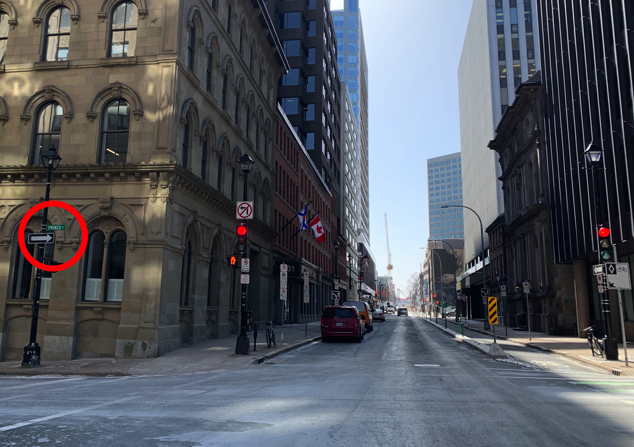
caption
This sign for Prince Street (circled in red) is the smaller type. Located at the intersection with Hollis Street.This sign for Prince Street (circled in red) is the smaller type. Located at the intersection with Hollis Street. Photo: Sam Farley
Carter’s tweet did not get a reply from the mayor, but the tweet speaks to how something as simple as missing street signs can have a negative impression on tourists and visitors.
Monica MacLean is the communications director for local tourism promotion agency Discover Halifax.
MacLean said in an email statement that infrastructure and street signage are important elements of making a city easy to get around for tourists that are unfamiliar with the area.
“When destinations prioritize the needs of residents, like clear, legible street signs, it makes it better for visitors, too,” MacLean said.
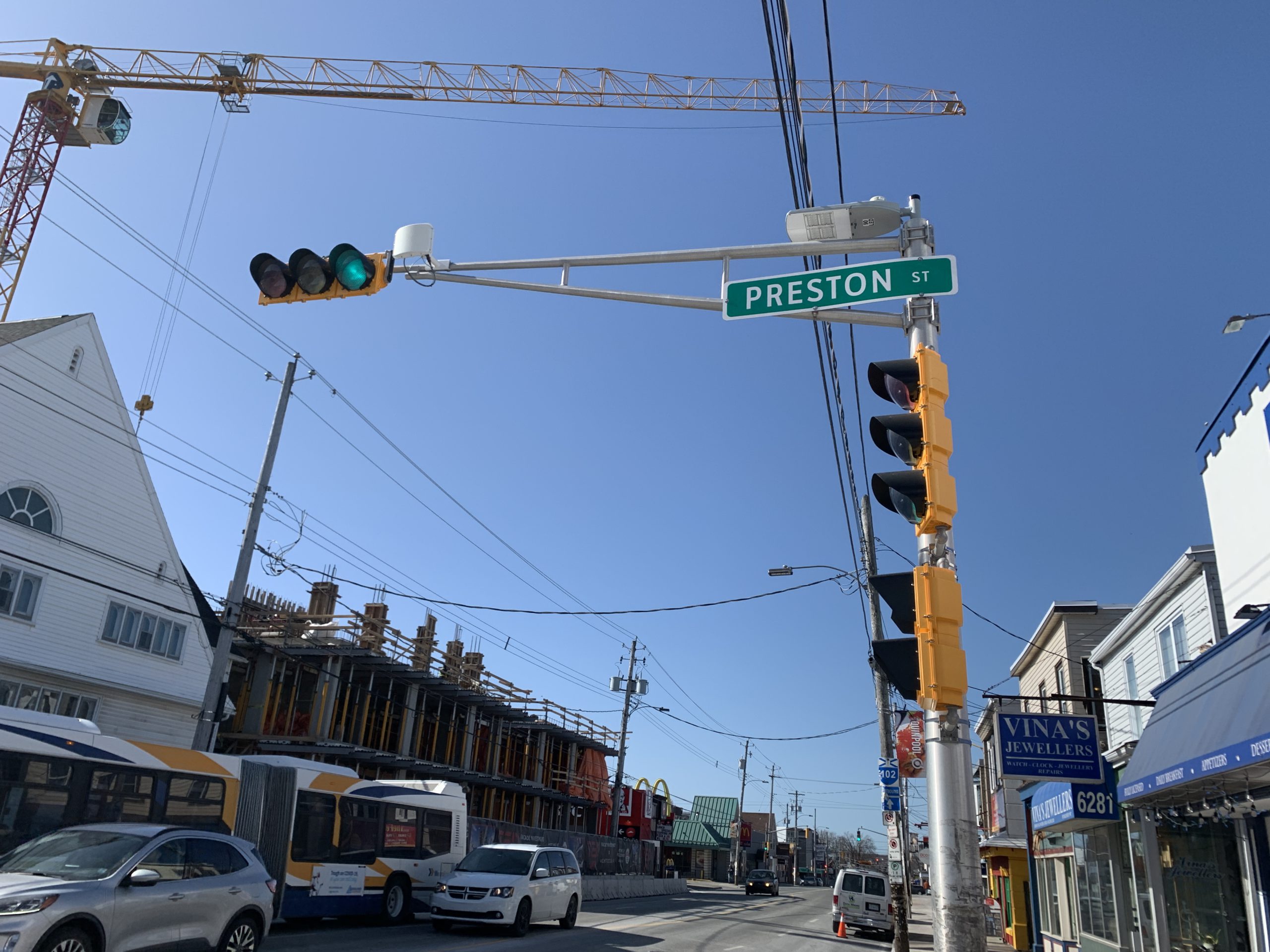
caption
An example of an oversized sign used at an intersection with a traffic light. Located at the end of Preston Street at Quinpool Road.Halifax Transportation and Public Works is responsible for maintaining street signs within the municipality. Klara Needler, a municipal spokesperson, offered comment on behalf of the department.
Needler said the oversized street name signs, which have been used in Halifax for more than 15 years, are typically installed where the traffic light poles can accommodate the sign.
The main reasons the oversized signs cannot be installed at some intersections include lack of space for the signs on the traffic light poles, the inability of some poles to withstand the additional wind load that more signs would create, and visual clutter from too many signs on one pole.
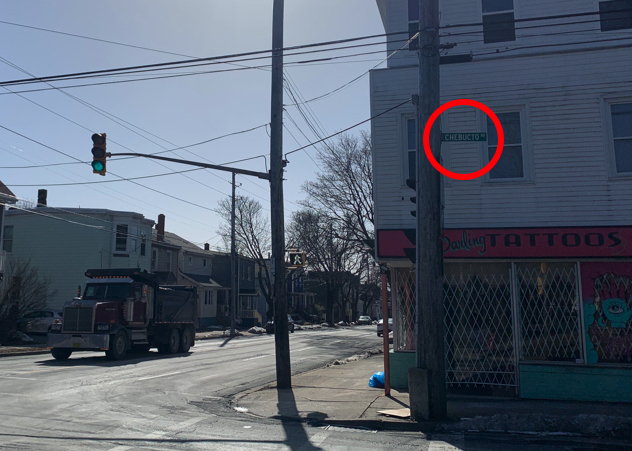
caption
This sign for Chebucto Road (circled in red) is the smaller type, and its placement high up on the telephone pole and set back from the street makes it hard for drivers to spot. Located at the intersection with Oxford Street.As for missing signs, the municipality relies on public complaints to 311, a toll-free municipal services phone line.
“The most common way that missing, damaged or faded signs are brought to the municipality’s attention is through residents submitting reports to the 311 Contact Centre,” Needler said in an interview.
Needler added that municipal staff in the field make reports on signs needing replacement. Once a report is made, staff will visit the location to determine if a replacement is needed. This usually happens within five business days.
For the current budget year, the municipality’s Transportation and Public Works department maintenance budget is $2,134,500, which includes all costs associated with traffic signs and pavement markings, among other costs.
Needler said that currently, the municipality is all caught up on sign replacements.
About the author
Sam Farley
Sam is a fourth-year King's journalism student from Boston.

J
John
S
Shannon Crowell
D
Dayeton Larson
J
Jack DuBeau